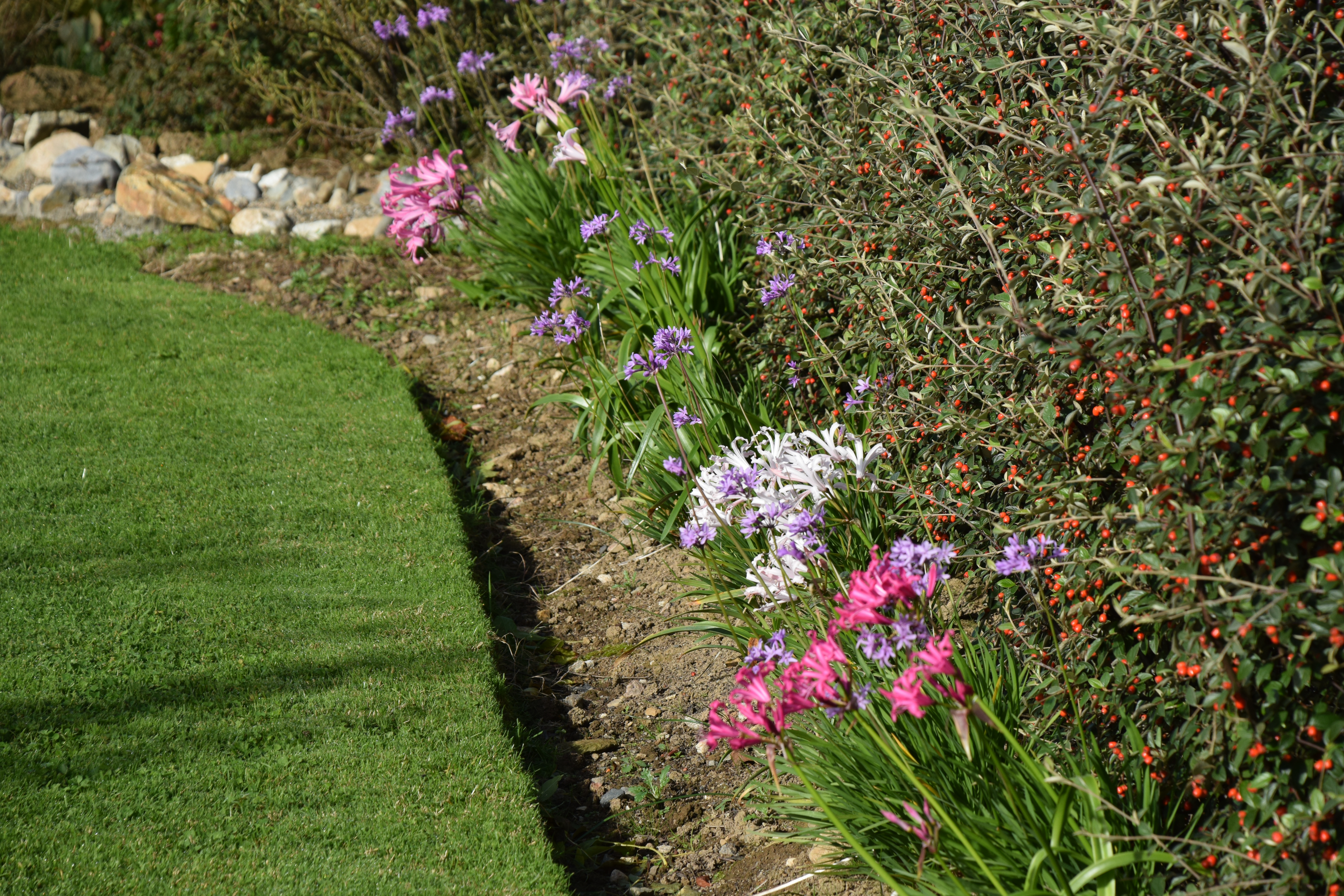
Hedges have a multitude of uses in the garden. They can define boundaries, offer protection to other plants and divide the garden into sections. They take a lot longer to achieve an effect than a fence or a wall but they are much cheaper and you don’t need brick-laying skills! They do need maintenance – clipping is necessary at least once a year – but so do fences. And unlike fences they get stronger and better each year and won’t blow over in a storm. They also provide cover for birds and wildlife and they may have other features. Above all they are much ‘greener’ and more interesting than fences and walls.
My garden needed hedges around the edges when I moved in and also needed hedges to define the areas. Now, four years later, most are 2m high and making an impact. I needed to plant hundreds of plants and I used a variety of species.
When I was working at Nags Hall in the 80s the preferred choice by almost everyone was ‘Leylandii’, now shunned by most gardeners. It had many good qualities. It is evergreen and grows fast. It is hardy and not fussy about soil. Just as importantly, it was easy to propagate and grow so was cheap to buy. But we all know that happened next and, if left to grow unchecked, it gets huge. If overgrown, it is hard to control because it will not sprout from bare wood and if it is well-trimmed it is prone to cypress aphid which causes large brown areas.
If you need an evergreen hedge there are much better options. Yew (taxus) is the traditional choice and will grow in sun or part shade. It only needs clipping once a year and grows quite quickly. It is best for hedges 2-2.4m high. Shrubby honeysuckle (Lonicera nitida) is a quick, dense and flexible hedge that is best for hedges about 1m high. It needs clipping twice a year. Privet is a traditional choice and is often regarded as rather boring but it is adaptable and easy to grow and you could always plant golden privet for a glowing hedge. It too needs twice-yearly clipping and is suitable for a hedge 1.2-2m high. All evergreens including holly, are best planted as potted plants because they do not like to be bare-root, though you can get away with privet if you are careful (I did and was with a short hedge of golden privet).

I have never been very excited about griselinia as a garden plant but I am finally realising how good it is as a hedge. It is often thought of as rather tender and it is a fine choice for a coastal plot (above) but it is hardier than we used to think and I have planted a hedge and it is doing well in some very poor, dry soil. It grows quickly, is a light, olive green and is a good choice for a hedge 1.5-2.4m high.
Although it is not completely evergreen, Cotoneaster franchetii is a great wildlife choice. I have been pleasantly surprised at how well this has grown in some heavy, rather wet soil. The foliage is rather grey and the small pink flowers are loved by bees. The flowers are followed by orange berries that the blackbirds appreciate in late winter too. It is suitable for hedges 1.5-2.4m high and needs clipping twice a year to keep it tidy. It can be planted as bare-root plants if you don’t allow the roots to dry out before planting.

These are all ‘neat’ hedges but if you want a wildlife hedge that is less formal, there are lots of shrubs that can be used, including hawthorn, sloe and amelanchier. I planted a mixed wild hedge of hornbeam, amelanchier and Rosa rubiginosa, the sweet brier with apple-scented leaves. It is covered in pink flowers in early summer but it is most spectacular just now with masses of scarlet hips. It cannot be trimmed as a neat hedge but, as part of the mix, offers a lot for wildlife.

Among deciduous hedges, the two finest are beech (fagus) and hornbeam (carpinus). Both keep their leaves in winter, if they are less than 2m high, and the brown foliage offers privacy. Beech has the most attractive foliage but it is intolerant of heavy and wet soils.

I knew this when I planted my ‘copper beech’ hedge (above) but I took the risk. It was a mistake and a lot of the plants have struggled, or even died. In contrast, the hornbeam (below), which I expected to grow much better, has done so and is a much better proposition in less than ideal conditions. Although still young, they are 2m high and thickening up. Both beech and hornbeam only need clipping once a year, in August.

This is the perfect time to plant hedges, whether potted plants or bare root. Bare root plants are less expensive than potted plants but must be planted carefully so the roots do not dry out. They can be planted from now till March but autumn planting is best.
Always prepare the soil well before planting any hedge. Dig over the soil and fork in plenty of organic matter. In spring, apply a general fertiliser and be prepared to water in dry periods, but autumn planting is much safer than spring and summer planting and the plants will be more resistant to dry weather.
Weekly reminders
Tidy old vegetables and pull up beans and their supporting canes
Cut back old and dead leaves on alpines and put grit around the plants to protect them from slugs and snails
Take hardwood cuttings of shrubs and curants
Prune back autumn-fruiting raspebrries
Plant blueberries in pots with ericaceous compost
